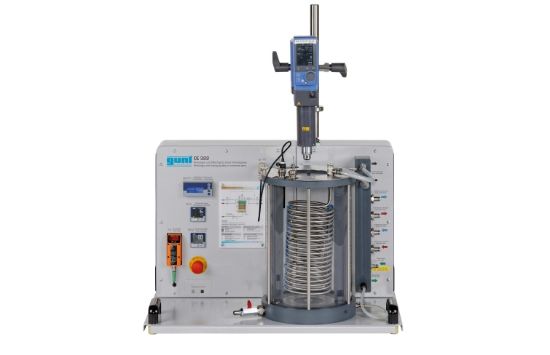The mixing of solid, liquid and gaseous substances is necessary for the production of many products. The requirements in terms of the stirring machine vary considerably depending on the respective substances, so a large variety of different stirring machines are available.
The continuous phase is liquid during stirring. The CE 322 device can be used to study the production of solutions (solid dissolved in liquid), emulsions (mixture of insoluble liquids) and suspensions (insoluble solid in liquid).
The mixing process takes place in a stirred tank with coiled tube, baffles and gas distributor in the bottom. All installed components are removable. The stirring machine is located above the stirred tank, can be lowered and is highly effective for the study of viscous substances. The speed can be adjusted. This makes it possible to undertake a detailed investigation of different stirrers and substances, including with gassing (recommendation: water, glycerine, compressed air).
Eleven different exchangeable stirrers are available. Plastic balls are used to visualise the characteristic flow fields of the different stirrer types.
Experiments on the influence of viscosity can be carried out with different substances or different temperatures. The baffles can be used to study and visualise the influence on the mixing process.
Sensors record electrical conductivity and temperature in the stirred tank. The mixing time and degree of mixing of solutions are determined using the electrical conductivities. Torque and speed are used for the power curves. The measured values are displayed digitally and can simultaneously be transmitted via USB directly to a PC, where they can be stored using the software included.

